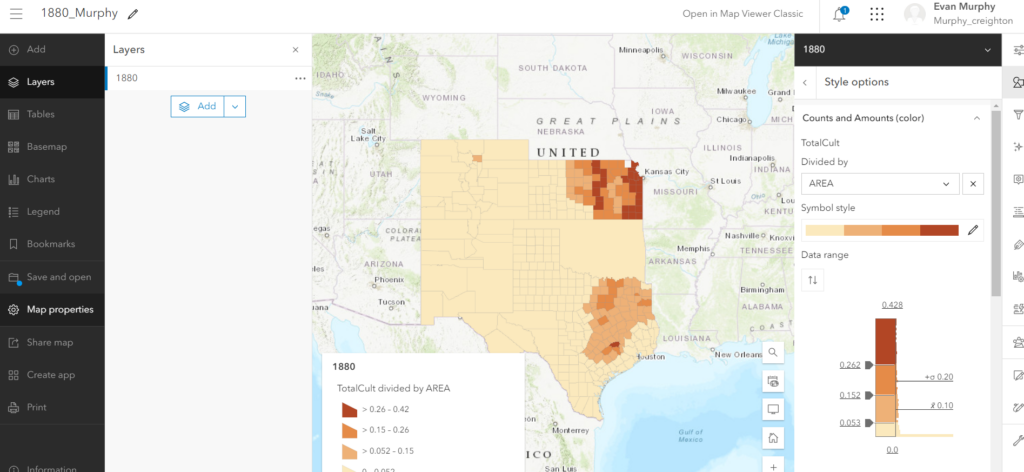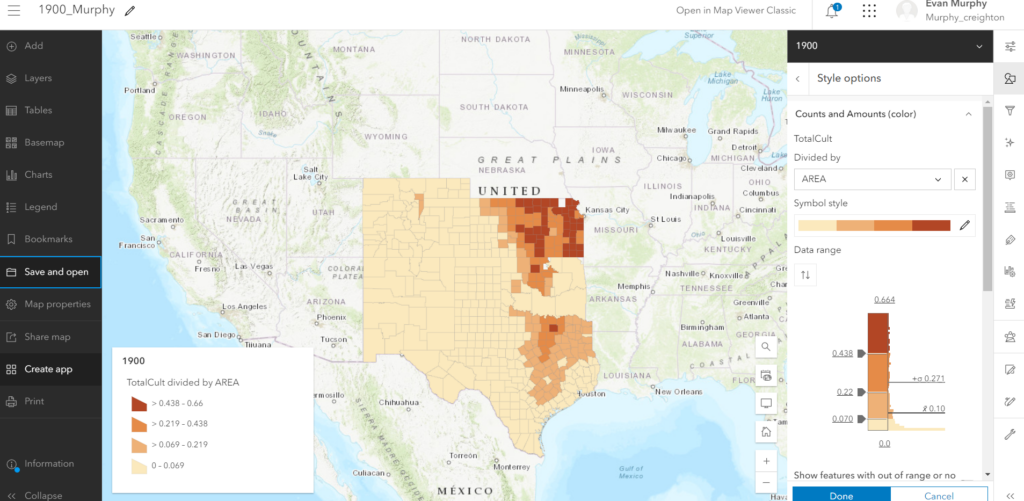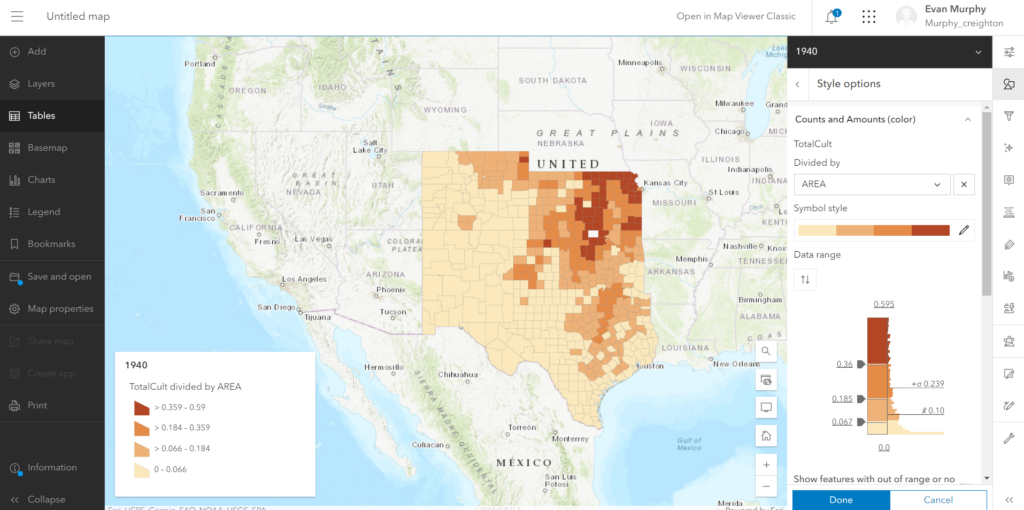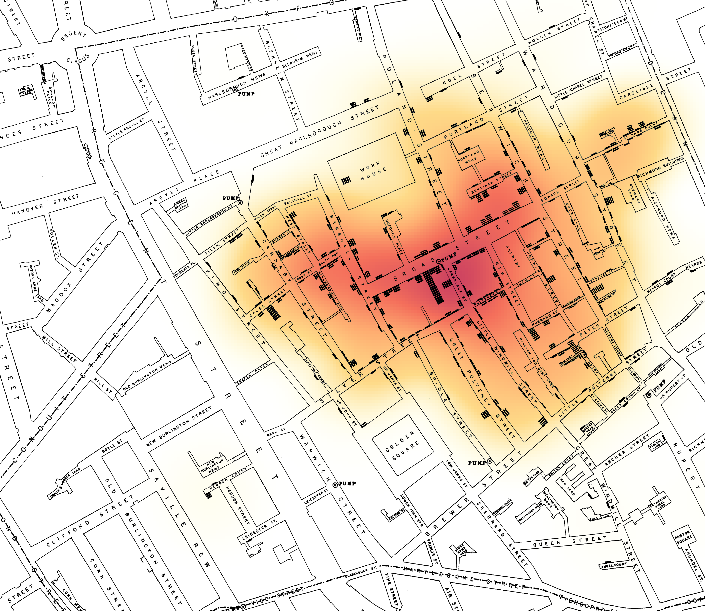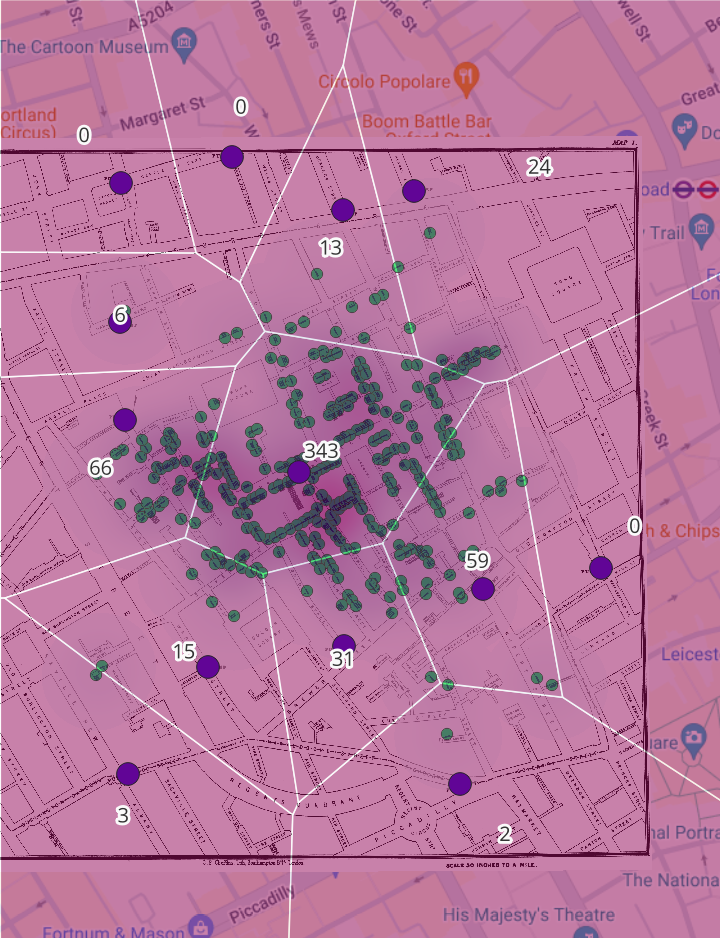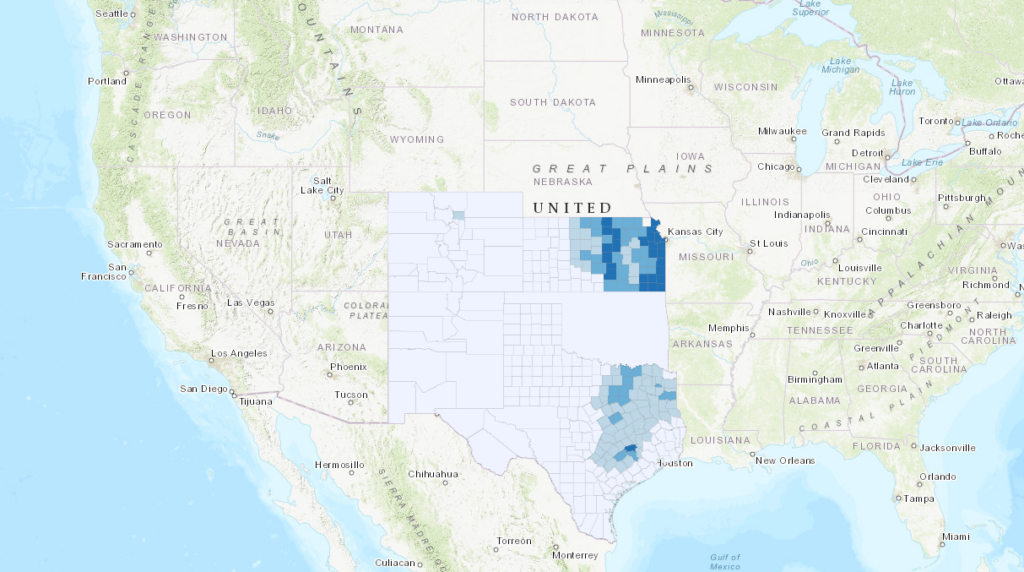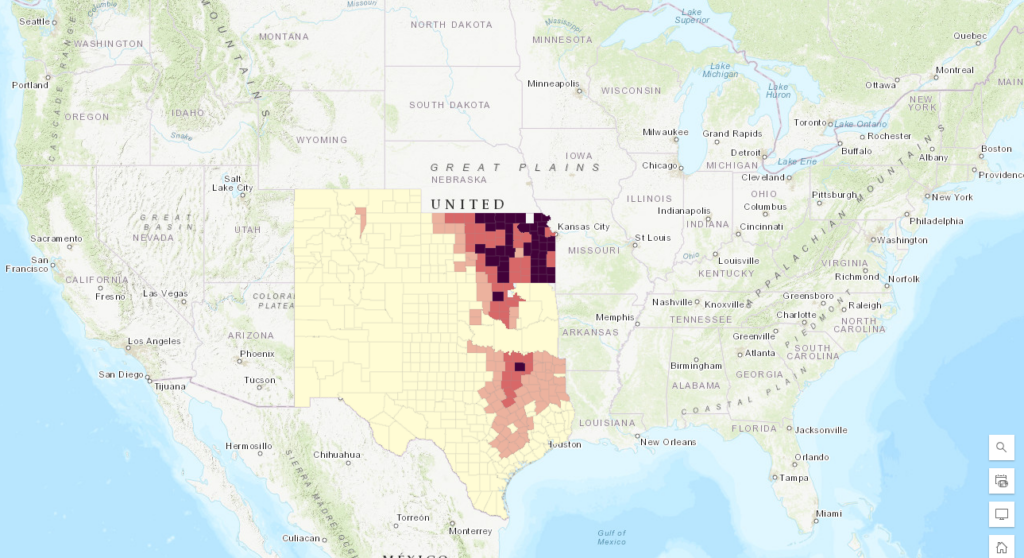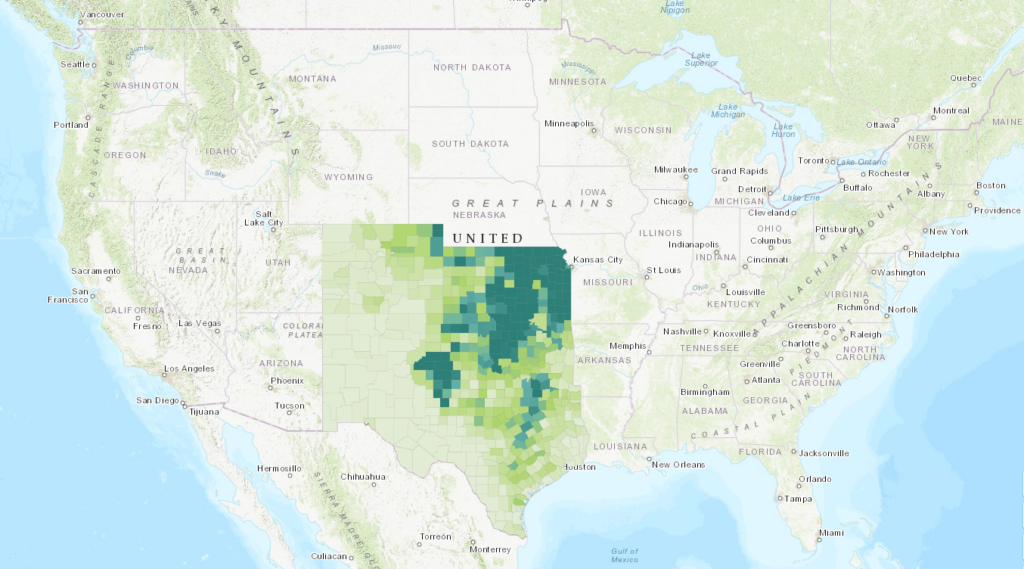- What patterns do you see between mortgage companies and locations that supplied lendeesin Philadelphia?

Here, the total number of mortgages are shown shaded in black. More darkly shaded areas are the ones in which the most mortgages were offered. Berean Savings and Loan Association, a black-owned company, is shown in green. This company’s mortgages were concentrated in areas marked to be high-risk. Metropolitan Life, shown in red, was not a black-owned company. It also sold most of its mortgages in high-risk areas, but the correlation is not quite as dramatic.
2. Which regions had the highest interest rates?

In this map, high interest rates are shown in dark orange. They line up almost exactly with the areas marked as the most high-risk for lenders.
3. What indication do you see (if any) that HOLC maps caused redlining (as opposed to
mapping preexisting discrimination)?

Here, the percentage of black people living in each neighborhood is represented as a cloropleth map underneath the interest rate layer, with the highest percentages of black residents in purple. Some of the districts the HOLC marked as high risk were in places with few black residents, but the HOCL marked all places with a high percentage of black residents as high-risk. This suggests that while race wasn’t the only factor that caused districts to be marked high-risk, it definitely was a factor.
4. What additional data layers do you think might supply evidence of discriminatory housing policy/segregated urban development that you don’t have access to in this exercise?
I’m not very familiar with the intricacies of redlining and honestly, I barely know what a mortgage is, so I don’t think I’m very equipped to identify what data I might be missing. That being said, I think it’d be interesting to be able to see how much money these companies made from collecting interest in different areas. That would help to determine the motivation for their lending patterns and show how much high interest rates affected the likelihood of people taking out loans.
5. Create one clear, legible map that you think best demonstrates the most compelling
visualization of redlining in Philadelphia.
I think that the layer showing interest rates is a very important piece of evidence, but after trying a few different things, I wasn’t able to make it look comprehensible. It looks fine on its own, but when you add any other layer to the same map, it becomes very hard to tell what’s going on.
My second idea was to show the percentage of black residents in each neighborhood over the HOLC map, but QGIS wasn’t letting me change the opacity of the polygon layers for some reason, so I’ve settled for making the georeferenced HOLC map transparent. It doesn’t look very good, but it does display the same information: neighborhood with a high percentage of black people were always marked as high-risk. The best I could do for readability was get rid of the basemap.














